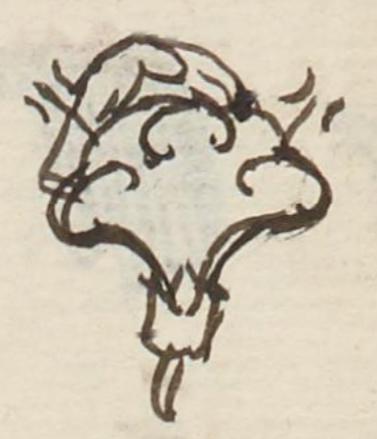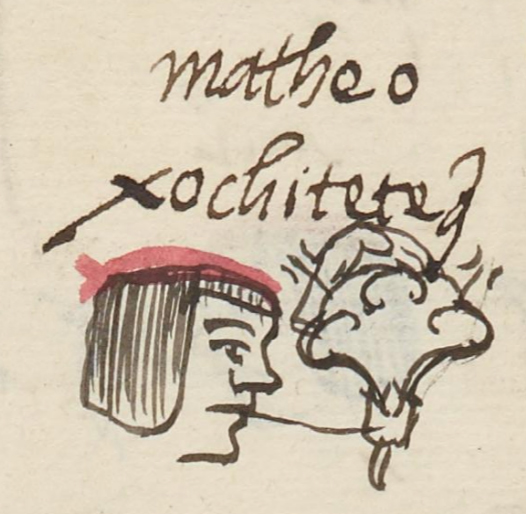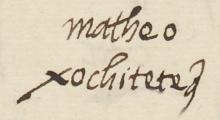Xochitetequi (MH503r)
This black-line drawing of the compound glyph personal name Xochitetequi ("Flower Cutter," shows a flower (xochitl), attested here as a man's name) with a hand over it, cupping the top of the flower. Presumably, the hand is there to represent someone who cuts (tetequi) flowers into pieces. The flower has three prominent petals with swirling edges, a stem, and two pestils or stamens. Bracketing the tips of the later may be anthers.
Stephanie Wood
The bracketing shape of the anthers, if that is what they are, is reminiscent of the bracketing of something in the Quetzalcoatl glyph, below. Bracketing also appears in Necoc and Nepancauh. This is a practice being tracked here for possible subtle meanings.
In some flowers, perhaps more than this one, the anthers will be pronounced. The anthers are the flower parts that produce and provide the pollen, which has the reproductive capacity that has been compared in Western cultures to semen.
Stephanie Wood
matheo
xochiteteq~
Mateo Xochitetequi
Stephanie Wood
1560
Jeff Haskett-Wood
flowers, flores, to cut, cortar, verbs, verbos, nombres de hombres

xochi(tl), flower, https://nahuatl.wired-humanities.org/content/xochitl
tequi, to cut up, https://nahuatl.wired-humanities.org/content/tequi
tetequi, to cut into pieces, https://nahuatl.wired-humanities.org/content/tetequi
Matrícula de Huexotzinco, folio 503r, World Digital Library, https://www.loc.gov/resource/gdcwdl.wdl_15282/?sp=83&st=image
This manuscript is hosted by the Library of Congress and the World Digital Library; used here with the Creative Commons, “Attribution-NonCommercial-ShareAlike 3.0 License” (CC-BY-NC-SAq 3.0).







